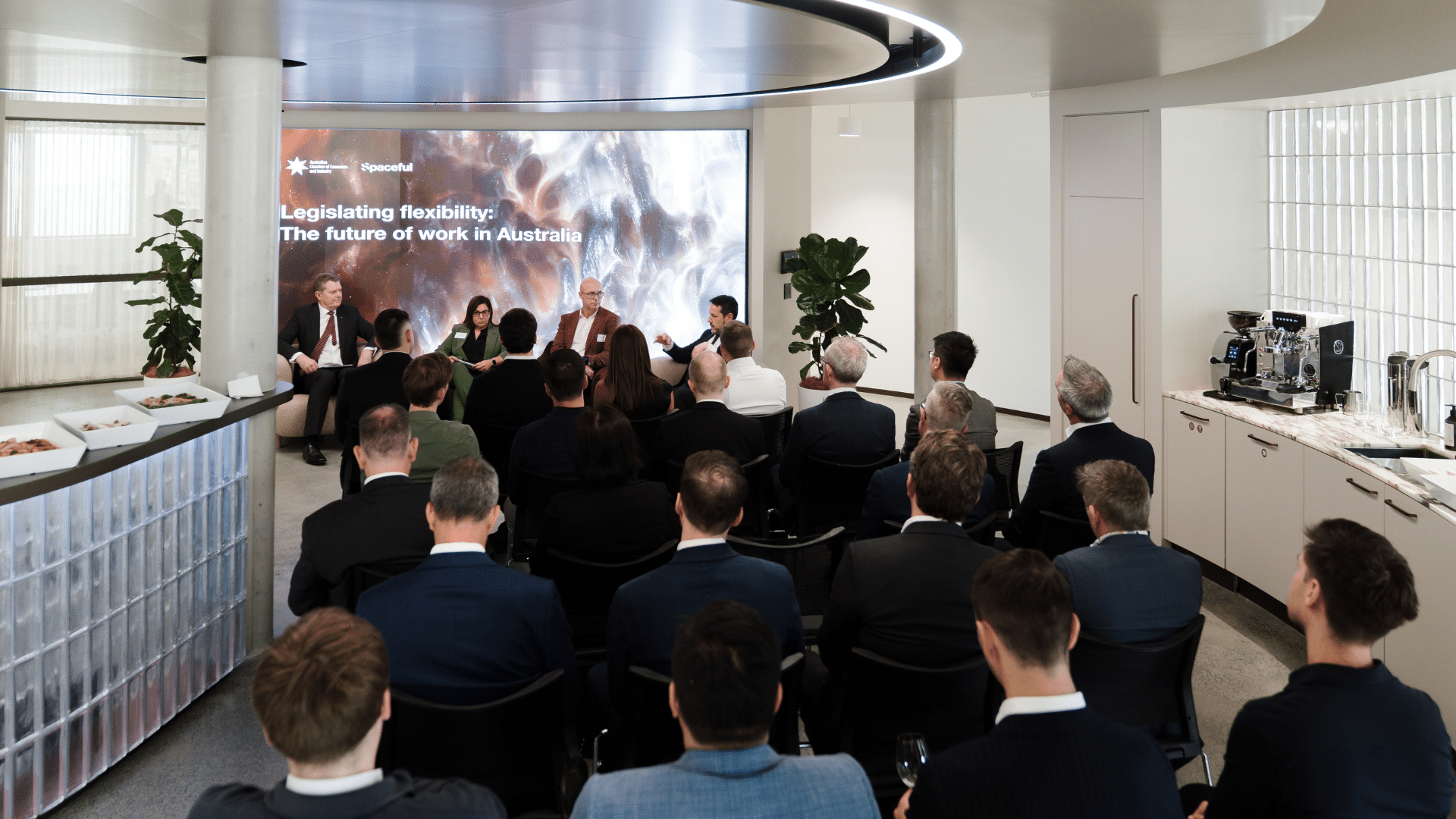
Spaceful recently hosted Unlimited: An Exploration of Future Innovation, where a distinguished panel of workplace experts delved into the quickly evolving area of “Future Workplace Innovation.” The discussion covered key elements such as:
01. How can organisations leverage technology to create a more innovative and efficient work environment?
02. In what ways can AI and automation be harnessed to enhance workplace efficiency and engagement?
03. How can organisations foster a culture of innovation within their workforce?
As new technologies reshape our work practices, it is crucial to understand what “innovation” looks like in practical terms within the workplace. In this context, we examine strategies that ignite and sustain innovation in the workplace.
Adjustments in leadership mindset and organisational structure
Incorporating innovation in mission, vision and values
“Innovation begins with the mindset that business leaders have and what they demonstrate. You must first define what innovation means for your company and take action accordingly.” – Janna McCann, Head of Innovation at AstraZeneca.
To cultivate an environment conducive to innovation, it is essential for management to exemplify a clear and meaningful mission, vision, and set of values that encourage and promote innovation. This foundational alignment provides a unified direction for all stakeholders.
Discouraging micromanagement
“As remote and flexible work have become the norm, we’re shifting into more output-based management styles and allowing people to work when, where and how they work best.” – Matthew Nolan, Head of Workplace at AwareSuper.
This approach fosters autonomy among employees, enabling them to work flexibly and creatively on their own terms and according to their specific strengths and preferences. Long-term micromanagement has proven to lead to low employee morale, high staff turnover and an overall reduction of workplace productivity, whereas companies that encourage creative freedom see much more favourable results – Source.
Reconsidering hierarchical structure
Restructuring hierarchical frameworks to empower lower-level staff with decision-making authority promotes agility and responsiveness within the organisation, therefore, improving the ability to innovate and act on innovative ideas.
Constructing a culture that supports change
Prioritising the collective over the individual
Fear-mongering cultures, characterised by rigid procedures and individualistic attitudes are creativity and innovation killers. A culture that promotes collaboration and support is what fosters innovation.
Implementing change management
Addressing resistance to change, particularly among older generations who tend to be “stuck in their ways” is another pivotal aspect. Innovation inherently involves change, and “challenging established norms requires both functional and emotional engagement,” as highlighted by Janna McCann. Implementing effective change management programs can channel enthusiasm towards innovation, encouraging a culture where curiosity and exploration thrive. It is also crucial to have advocates for innovation scattered throughout the company.
“A co-creation mindset is crucial to get stakeholders on board. You must empower people, especially front-line staff, to participate.” – Michael McQueen, Futurist and Change Strategist.
Listening to what the workforce values
Creativity doesn’t just appear out of thin air. It is a product of first promoting a healthy work-life balance – Source. Values in today’s workforce have shifted – we’re entering a time where the workforce cares more about work-life balance and professional development than attention-grabbing perks and benefits – Source. If employees aren’t physically and mentally healthy, how are they expected to innovate?
Recognising the social inclinations of younger generations presents yet another opportunity. Gen Z, in particular, values social interaction at work and as early adopters when it comes to tech, they are very open to embracing new ideas. “Providing conducive spaces for collaboration and engagement can harness their enthusiasm for driving innovation forward.” – Mark Cohen, VP of Product APAC at MRI Software.
Encouraging team interaction, communication and exploration
Clear and open communication
“If innovation is everyone’s job, it’s no one’s job.” – Tica Masuku, Workplace Strategy Director at Spaceful.
If something is everyone’s job, no one will take responsibility for completing the work, and everyone can justify their inaction by assuming that someone else will handle it. It is therefore crucial to clearly outline innovation responsibilities for every member involved and to make these decisions with, not for, employees to receive buy-in early on.
Teamwork makes the dreamwork
No one innovates alone. A collaborative team serves as the ideal environment for generating new ideas and enhancing existing ones.
Dedicated spaces to encourage team interaction
“If you want to kill innovation, allocate people 100% to one desk and have very fixed processes. This strips the soul from both people and organisations. The best way to create innovation is to do the opposite.” – Mark Cohen
Establishing dedicated workspaces for collaboration and innovation enhances team synergy and creates more opportunities for creative thinking, while also fostering a desired framework of open communication. However, it’s important that cultural change be implemented alongside the creation of these spaces so that people a) use them and b) use them as intended.
“Everyone used to look at Silicon Valley as the model for “cool workplaces”, and some companies used to just mimic these without any cultural change to accompany it. They were simply following a trend or a fad.” – Michael McQueen
“An important aspect of creating these collaboration spaces is to show relevant stakeholders how to use the space, otherwise you will not get the best results from creating them.” – Tica Masuku
“An excellent way to demonstrate value in these spaces is by creating FOMO, your number one ally.” – Janna McCann. Reward those using the space effectively and attract engagement through activities such as high-value learning sessions.
The power of personal passion in workplace innovation
One way Google successfully encouraged innovation was by implementing “The 20% Project”. This strategy advised workers to spend 20% of their work time focusing solely on a passion project of their choosing, as long as the project was related to furthering the company in some way – Source. From unconventional ideas to skill development, this time enabled employees to explore creative proposals, test their work, learn from failures, brainstorm solutions, collaborate, and persist in their innovative efforts – Source.
Championing diversity
Updating HR practices to promote diversity and flexibility across all facets of employment—from hiring and promotion to training, development, and performance evaluation is crucial. By embracing non-traditional approaches, organisations can nurture a breadth of perspectives and ideas, essential for innovation.
Additionally, people thrive in diverse and adaptable spaces that cater to various needs and preferences. Ensuring workplace environments are inclusive and supportive of diversity, equity, and inclusion (DE&I) not only enhances employee satisfaction but also unleashes creativity across different settings. By creating environments that accommodate everyone, organisations empower their workforce to innovate and excel in their roles.
“People don’t go to work to do the same task every day, so we need to cater to people doing different tasks every day. We must also enable technology throughout the space that affords staff the ability to do a full range of tasks no matter where they are within the workplace.” – Matthew Nolan
Innovation through strategic work environments
Innovation in the workplace is best achieved through improvements to the physical environments we work in and the strategic cultural initiatives that support this way of thinking.


